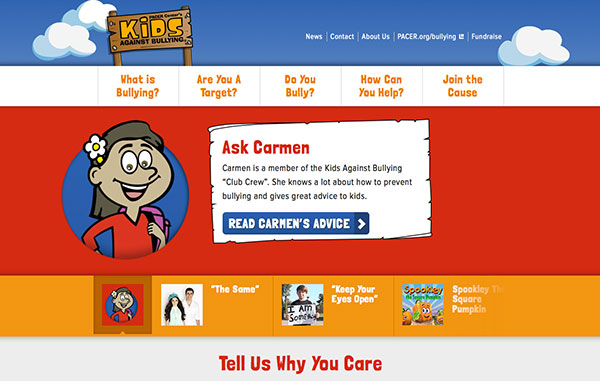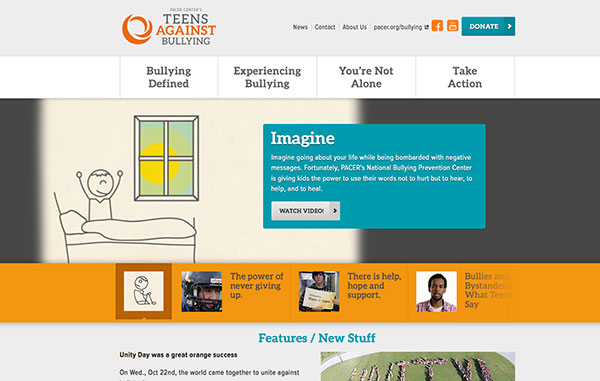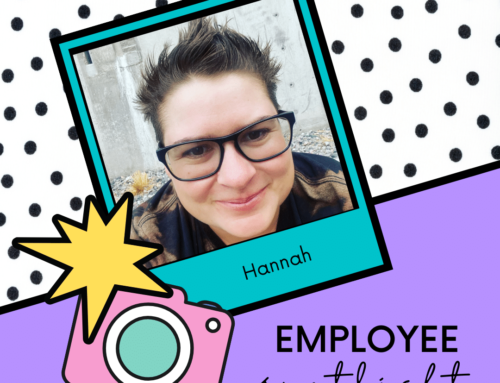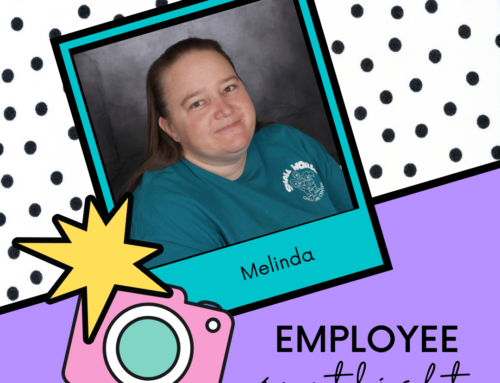Bullying Prevention Part 4: What Can You Do?
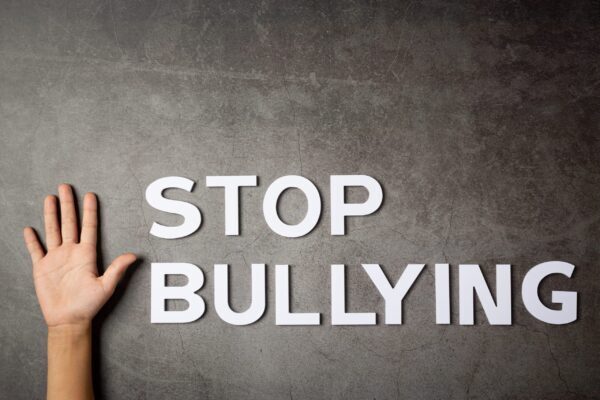
Photo Credit: freepik.com

Photo Credit: freepik.com
How Can You Help?
Bullying doesn’t affect just those who are bullied and those who bully, it has a huge impact on those who see the behavior!
The group of kids who witness bullying is really important. This group may not be getting bullied, they may not be bullying, but their reaction can make a big difference.
Think about it: Have you ever seen a group watching a fight? There are some who look, then walk away; there are others who watch and say nothing; and there are those who cheer it on.
How this group responds can really impact a situation.
Learn what you can do so that you have a positive influence!
Witnesses – What Can They Do?
If you see someone being bullied, speak up!
- When students are willing to say they think something is wrong, they can make a difference.
- Let others know that you don’t accept bullying at your school, and others will be more willing to speak up, too.
- If you see bullying, you can tell a grown-up. Telling is not tattling. It’s okay to tell. Reach out!
- Tell the kid who is being bullied that he or she doesn’t deserve to be treated that way. Nobody does.
- Ask friends to join you in being a kid against bullying.
Telling vs. Tattling
A lot of kids say that they don’t want to tell an adult about bullying because they don’t want to be called a tattle-tale. But there’s a big difference between “telling” and “tattling.”

It’s okay to tell an adult when you see bullying.
In fact, it’s a really smart thing to do!
Advocacy For Others
What Youth Can Do to Help Peers Who Are Experiencing Bullying
Think about what can happen as a result of being bullied:
- Feeling all alone
- Believing that no one cares
- Questioning whom you can trust
- Wondering if anything will ever change
That is a lonely place to be.
Now imagine how that could be different. Think about how powerful it would be for someone who feels all alone to have another person reach out to them, especially someone their own age who understands what they
might be feeling and shows that they care. That person can be YOU.
Peer support makes a difference!
Have you ever thought, “It’s none of my business—I should just ignore it and walk away”? Put yourself in the other person’s place. If you were being pushed around, laughed at, gossiped about, made fun of, or ignored on purpose, wouldn’t you want someone to be there for you? Know that when someone is hurting, especially emotionally, your support as a peer is incredibly meaningful!
1. Be available for conversation
Students who experience bullying often don’t tell anyone. They tend to keep it all inside, without sharing the pain they’re experiencing. Maybe they are nervous, afraid, or embarrassed. Maybe it’s because they feel they don’t have anyone they can talk to. If you know someone being bullied, let them know you care by encouraging them to talk about their experiences. Your goal doesn’t need to be fixing the problem; instead, focus on letting them express their story and their emotions. You might be the first person they tell.`
Here are some ways to connect:
- Listen without judgment
- Let them know they have the right to talk about what’s happening
- Ask questions that allow them to talk through their experience and emotions
- Want to tell me what happened?
- How are you doing?
- What would be helpful to you right now?
- Show empathy for what they are experiencing
- React with support and compassion
- Tell them it’s not their fault
- Help them think through how they can tell others about their experience
- Support them when they reach out to a parent or other trusted adult
2. Respond with intentional acts of kindness, acceptance, and inclusion
Recognizing what to do when you witness someone being bullied is complicated. There is not always a clear answer and a response that works well for one person may not be right for someone else. Know that when peers look out for each other, it has a tremendously positive impact on the student being bullied. Bullying brings people down. You can build them back up with encouraging words and actions.
Individuals often think the only way they can help is by confronting those doing the bullying. The reality is that in a bullying situation, confrontation is usually not safe. The one thing anyone can do to help is show support for the person being bullied.. There are so many ways to do this. Pay attention to what is happening, think about what you can do, and then act on it.
Here are some ways to be intentional with your support:
- Speak up, your words matter. Try saying:
- I’m here for you and I want to help
- You didn’t deserve to be treated that way
- You are a good person in a bad situation
- It was wrong of that person to do that
- Can I help you find an adult to talk to?
- Reach out, your actions are important.
- Connect with them during class breaks, even just to say hi
- Invite them to sit with you at lunch
- Walk with them to class
- Invite them to do homework with you and a group of friends
- Ask them to play a video or card game during free time
- Show them a video or photo that will guarantee a smile or laugh
- Be patient and respectful if someone takes longer to do something or does it in a different way
- Be a friend, build them up.
- Remind them that no one deserves to be disrespected and that bullying won’t last forever
- Even if they don’t want to talk, invite them to participate in conversations and make sure they feel included
- Recognize what they do well and compliment their talents
- Ask them questions about their activities or interests, and encourage them to talk about things that are important to them
- Make your non-verbal communication more inclusive and intentional, such as leaving seats open at your lunch table rather than filling chairs with belongings
3. Redirect the situation
Research shows that peers can be very effective at intervening in a bullying situation. A creative and sometimes challenging solution is to change the direction of the situation to a more positive course. It might take some practice, planning, and extra thought—it’s not easy to speak up against a wave of negativity—but research also shows that when one person speaks up, others will follow.
Support the person being bullied
Understand that this is not about getting in the middle of a fight or confronting those who are bullying. In fact, confrontation can be counterproductive and unsafe. The focus should be on supporting the person who is being bullied.
If you see bullying in person, you can:
- Help the person being bullied get away from the situation
- Ask them to walk with you
- Invite another friend or two to join you as there is safety and support in numbers
- Change the subject when your peers start tearing someone down
- Say something positive about the person being bullied
- Take the direct route and, if you feel safe, ask the person doing the bullying to stop
- Distract the person who is bullying by saying something like, “A teacher is coming” or, “Someone is taking pictures”
- Find an adult who can quickly intervene
If you see cyberbullying, you can:
- Write something positive in response
- Contact the person being bullied and let them know you are there for them
- Take a screenshot of the bullying
- Report it to a parent or an adult at school
- Report the bullying content to the social media platform and ask to have it removed
Redirecting a situation
When redirecting a situation, remember: When everyone is speaking negatively about another person, your voice becomes more important than ever. While it’s important to speak out against that behavior, it may not always feel safe to do so. Sometimes you may not be sure what to do in the moment, but you want to help to make sure that person feels supported. Talk to an adult you think would handle the situation in the most effective way and ask for their advice.
What does it look like to redirect a situation?
During class your teacher announces the winner of the science fair: a quiet, intelligent girl who doesn’t have many friends. Immediately, a bunch of your classmates start mocking her, joking about how she’ll never get a date to prom unless she makes one in the lab herself. You can see that their words are really upsetting the girl. You feel awful—she should be able to celebrate her big win.
What can you do? The whole class is starting to turn on this girl. You’re not sure that you’re okay with telling them directly to stop making fun of her, but maybe there’s a way for you to divert the situation. You take another look at her project on display in the front of the room and realize that it’s a pretty cool cell-phone-controlled robot. You start talking loudly to one of your friends about how cool it is and ask the inventor if you can try it out. Pretty soon the rest of the class shifts their attention to watch the robot zoom around the classroom. Now everyone is focused on this girl’s invention, rather than tearing her down. You can then go to her after class, congratulate her on her well-deserved award, and ask if she would like you to help her talk with the teacher about what happened.
4. Talk with an adult
When you witness bullying, whether you see it in person or online, it can be upsetting and difficult to respond to. Some situations are clear cut, like physical fights, and you know that telling an adult will keep everyone safe.
Many bullying situations can be much more complicated. When the bullying happens through gossip, name calling, intimidation, or trying to damage someone’s reputation, it can involve private, confidential details that another person doesn’t want shared. Maybe your friend is doing the bullying and you don’t want them to get in trouble.
In situations where you’re not sure what to do, seeking advice from an adult you trust can be helpful. An adult, such as a parent or a favorite teacher, can help you think through different ways to respond while ensuring everyone stays safe.
Here are some ideas for talking with an adult:
- Let them know that you’re coming to them for advice because someone is going through a situation that they can’t fix on their own
- Sometimes bullying involves a lot of personal details; if you don’t want to share everything, let the adult know that there are certain things you are not ready to share and ask them to respect that
- Emphasize that you want the bullying to stop and that the behavior has hurt the person targeted, as well as others who are involved
- Ask, “What can be done so that we can help and we can all feel safe?”
- Listen to the advice, seek clarification on anything that doesn’t make sense, and share your own ideas
- Decide on what steps you can take together
- Clarify what your role should be
- Thank them for listening and caring
5. Encourage others to come together against bullying and unite for kindness, acceptance, and inclusion
Have you ever heard the old saying, “There is power in numbers”? In the world of bullying prevention, this is especially true. While it is absolutely important that each person does what they can, individual actions are magnified when we join forces. When a group of individuals works together for a common cause, that is when real change happens.
Get others involved by:
- Starting a club or activity at your school that focuses on inclusion. For example, invite students with and without disabilities to work together on an art project each week.
- Holding an open event where board games are played, resources are shared, anyone can participate, and everyone has someone to work with
- Organizing a Unity Day event (third or fourth Wednesday of October) at your school or in your community
- Creating “safe spaces” on playgrounds that are monitored by peers and adults
- Starting a committee that focuses on ways to make your school, club, team, or organization more accepting of all members
Do your best!
Do your best to help, but also know that each bullying situation is different. It’s not up to you to solve it, but recognize that your support can make a difference.
DOWNLOAD THE ADVOCACY FOR OTHERS GUIDE
Sites for Kids and Teens
KidsAgainstBullying.org
A creative, innovative and educational website designed for elementary school students to learn about bullying prevention, engage in activities and be inspired to take action. A few highlights include:
- Learn how to recognize bullying behavior.
- Explore what to do if you are being bullied.
- Learn what you can do to change bullying behavior.
- Ways to do take action when you see bullying.
- Class Projects: Great ideas to share with your teachers.
- Real Kids Speak Out: Stories from kids and for kids.
TeensAgainstBullying.org
Created by and for teens, this website is a place for middle and high school students to find ways to address bullying, to take action, to be heard, and to own an important social cause. A few of the highlights include:
- Learn how to recognize bullying behavior.
- Explore methods to respond effectively.
- Common points of view about bullying.
- Language is Important: The way we talk about people impacts how we think about them.
- Reasons Teens Don’t Tell: Learn some of the reasons and a way to reframe the conversation.
- Real Teens Speak Out: Stories from teens and for teens.
- Peer (School) Projects: Ideas for school – and community – engagement.
Bullying is never okay, cool, or acceptable.
_______________________________________________________
This article was taken from excerpts written on PACER‘s website and reposted with permission. Click HERE to see PACER’s website. Links for the information in this post can be found on the following website pages:
pacerkidsagainstbullying.org/how-can-you-help/


